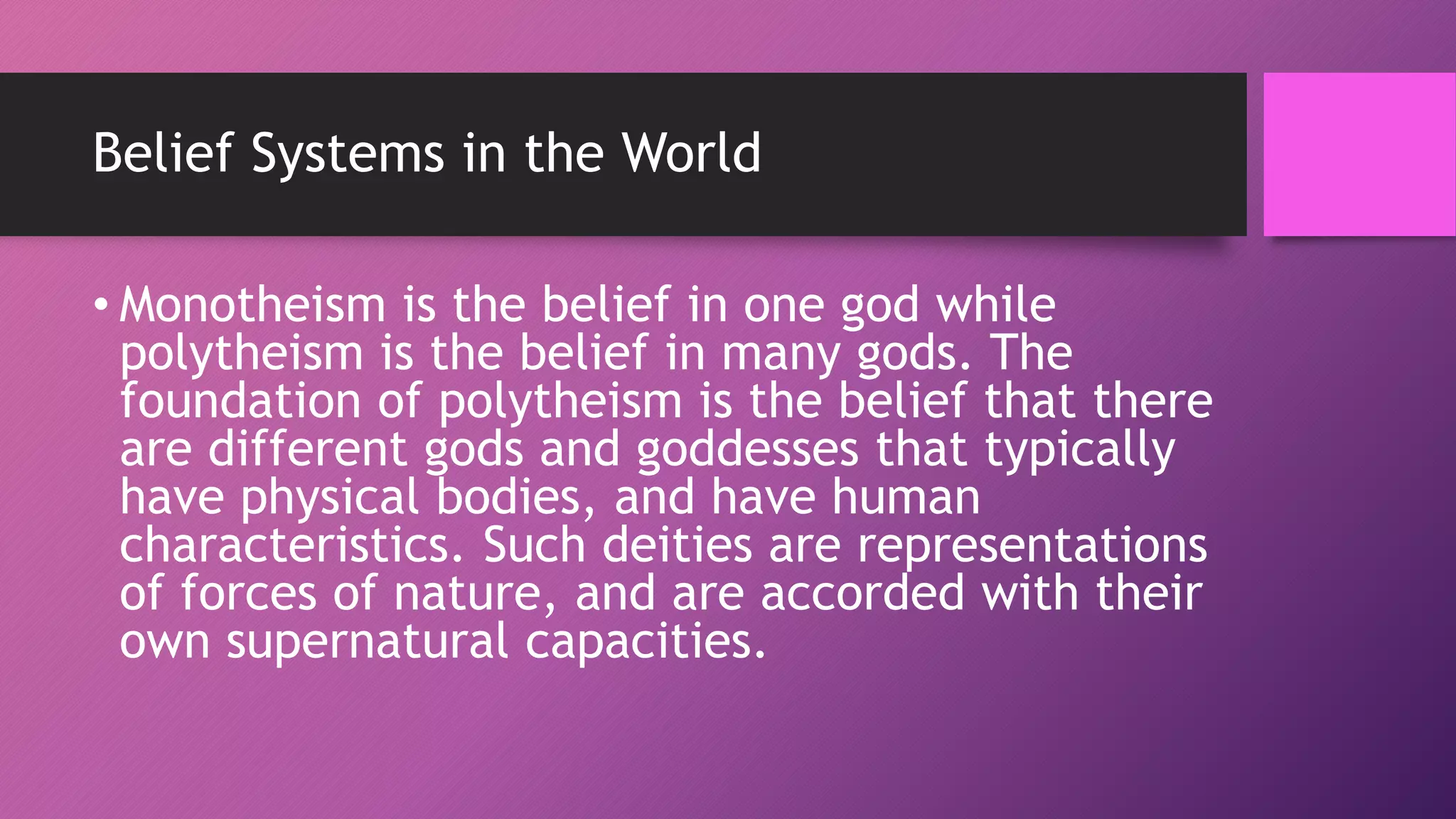This document discusses different topics related to religion and belief systems. It defines religion and belief systems, and explains some key differences between monotheism and polytheism. It also discusses animism as an early belief system and provides examples. The text then covers major world religions like Christianity, Islam, Judaism, Hinduism, and Buddhism. It analyzes how organized religions develop common elements like cults, creeds, codes, communities of believers, and community services. Finally, it examines how supreme gods were important for early civilizations to unite under one ruler.


























